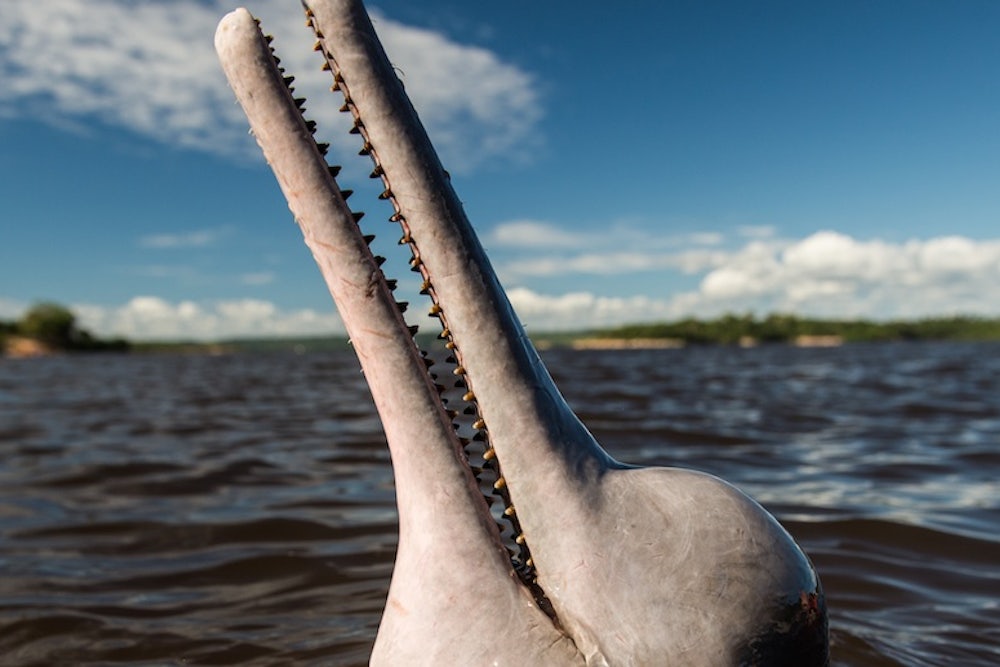Within hours of publication, a peer-reviewed study announcing the discovery of a new river dolphin species was already being dissected on Twitter. Should years of research conducted by a team of scientists be litigated in 140 characters or less? Consider the case of the Boto-do-Araguaia.
On January 22, six scientists—five hailing from Brazil and one from the U.K.'s Centre for Remote Environments—reported the existence of a new river dolphin species living in Brazil's Araguaia River. While still lacking a formal name, this new species is dubbed the “Boto-do-Araguaia” or the “Araguaian boto” in reference to the Brazilian term—Boto—for the river dolphin's genus. Publishing their findings in the journal PLOS One, these researchers utilized nuclear DNA, mitochondrial DNA, and cranial measurements to verify the first new species of river dolphin to be discovered since 1918. Two million years ago, the Boto-do-Araguaia was split apart from its sister species due to the formation of heavy river rapids dividing the Araguaia river from the Amazon. Since then the Boto-do-Araguaia have evolved independently and is now the third type of river dolphin to exist in this region.
Not all marine biologists agree that the Boto-do-Araguaia is a truly independent species. Dr. Alistair Dove of the Georgia Aquarium took to Twitter within hours of the study's publication to question its findings.
The lack of available physical remains, in this case only having one female and one male skull, could challenge the conclusion that the Boto-do-Araguaia is a truly unique species. Yet, there is something odd about cherry-picking one data-point and sharing it on Twitter to disprove an entire paper. This research comes from hundreds of hours of field and lab work in addition to series of reviews. Dove's concluding tweet seems like a question that would have been resolved during the peer-review process:
If Dove is correct, why did these scientists not wait and try to seek out further specimens? Start with the title of this paper: A New Species of River Dolphin from Brazil or: How Little Do We Know Our Biodiversity. Their research concludes by raising questions about the long-term viability of this new species. For example, using an environmental impact study mandated before the construction of the Santa Isabel hydroelectric dam, these researchers project their study to the broader Araguaia river basin to estimate that there are as few as 600 to as many as a couple of thousand Boto-do-Araguaia in existence.
A Boto-do-Araguaia Dolphin
Dove's tweets demonstrate the possible influence of the release of academic research now that it is no longer confined to the stacks of a university library. Twitter, Facebook, Tumblr, and even faster moving publications such as this one all participate in facilitating the creation of new debates with the potential to bring in millions of people. This team of six scientists are concerned that the Boto-do-Araguaia will suffer the same fate as the Baiji dolphin, a river dolphin discovered in China in 1918 and proclaimed extinct in 2006.
The Boto-do-Araguaia is at risk with already small numbers and possible habitat threats posed by expansions in soybean farming, cattle ranching and the construction of new hydroelectric projects. In the neighboring Tocantins River, the Boto-do-Araguaia's sister species is struggling to reproduce as six dams have fragmented their population. The researchers behind this study conclude that this new species should be at least minimally considered as vulnerable.
So should these findings be picked apart on Twitter and Facebook? If the goal is to help save the Boto-do-Araguaia from extinction, then I would expect the more social conversations, even those hostile to the study's findings, the better. Academic research has the unique ability to leverage authority to bring attention to a subject.
